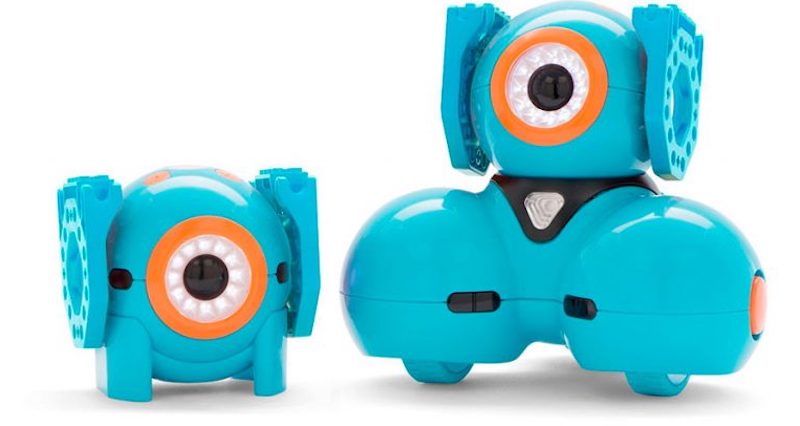If you’ve heard of the Dash Robot from Wonder Workshop, you’ve most likely heard of the Dot! Small but mighty, the Dot is a responsive and interactive robot designed for students aged six and up. Though it may not be quite as popular as the Dash because it lacks its own motors, the Dot is still a great tool for introductory programming. It is also a great alternative if you do not have the floor space for multiple Dash’s to be rolling around everywhere but still want to get kids coding!
In the box, there's the Dot Robot, a charging cord, two building brick connectors, and a Getting Started Guide. It takes an hour to charge and is otherwise ready to go right out of the box with no assembly required. Once fully charged, its long-lasting battery life provides several hours of uninterrupted play. They can even build on to their Dot with the Building Brick connectors! The Dot has Bluetooth capabilities, a microphone, speaker, LED’s and an accelerometer. These features help it detect when it is moved in any way, including dropped, shaken, tilted, or rotated.
Among the projects students can complete are programming the Dot’s LED’s and recording sounds for it to play. The Dot is compatible with three of Wonder Workshop’s apps: Wonder, Blockly, and Go. In the Go app, students can rename their robot, change its eye LED’s, and more. Within Blockly and Wonder, students can go more in-depth with programming the Dot Robot. Wonder is a picture-based language, whereas Blockly is a more traditional drag-and-drop graphical program similar to other robot Blockly programs. Both are very useful for providing a hands-on coding experience to elementary school students!

Using the Wonder app, I experimented with the Dot acting as a “marker” for the Dash. I learned that using the “Robot Seen” cue in the Wonder app allows the Dash to see other robots. It sends a signal that the Dash detects through its “eye.” However, it is important to note that only the Dash can detect the Dot and not vice versa. For example, kids can program the Dash to complete a certain behavior when it “sees” the Dot. In this case, the Dot acts as a “marker” or a guide that controls the Dash’s programmed behavior.
Interested in pairing art and robotics? Consider the Dot Creativity Kit, a do-it-yourself kit that includes project cards, costumes for the Dot Robot, plastic-to-cardboard connectors, stickers, a squishy case, and multiple project accessories to help students develop coding and problem-solving skills while encouraging creativity and fun!
To purchase Wonder Workshop products for your classroom, makerspace, or home, visit the Eduporium store. Don't forget to follow us on Twitter and Instagram for more, check out other cool EdTech tools in our store, and you might as well like us on Facebook, too!



